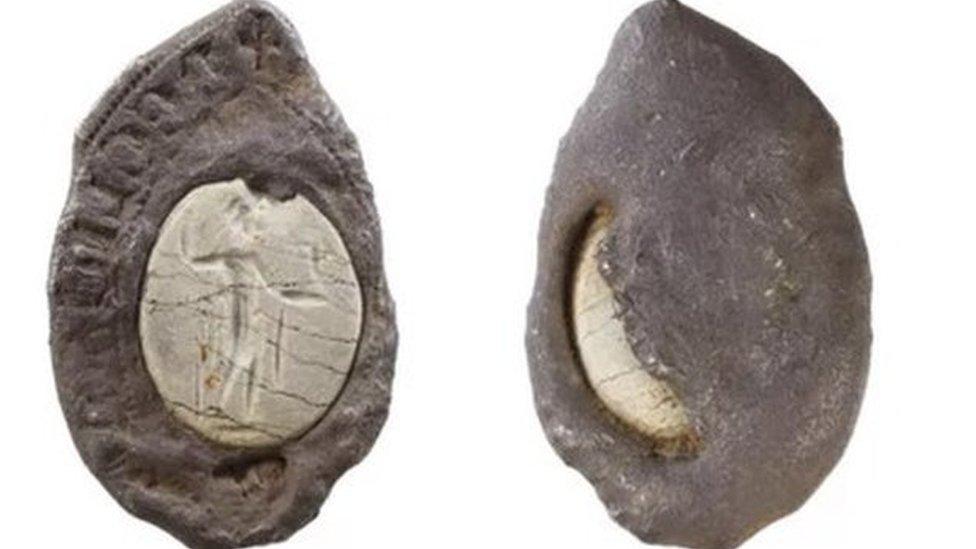Roman silver fragment found in Diss baffles experts
- Published
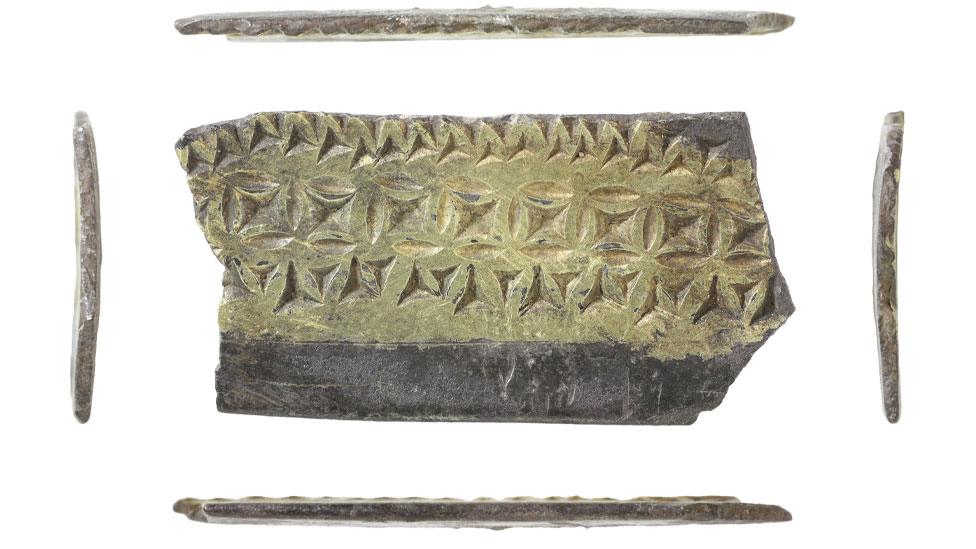
A fragment of gilded silver treasure has left experts baffled
A tiny fragment of gilded silver treasure found by a keen detectorist has left experts baffled.
The late Roman-era 1in (26mm) by 0.5in (13mm) piece was found near Diss, Norfolk, in February 2022 but no-one can work out what it was part of.
Experts in the UK and Europe have been consulted but cannot solve the mystery.
Dr Helen Geake, Norfolk's county finds liaison officer, said: "The most basic question of all is, 'what was this?' ... it's a bit frustrating."
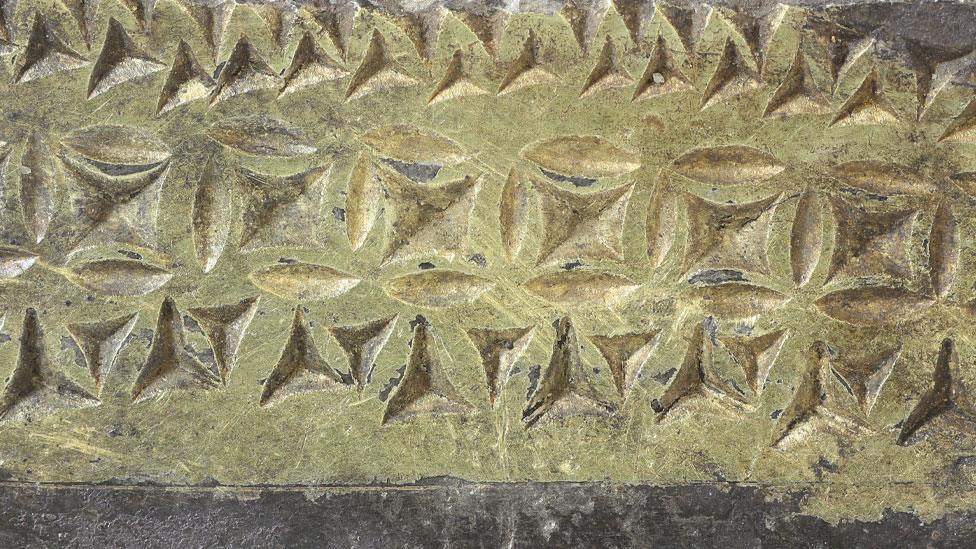
The thin fragment was discovered by a detectorist who regularly reports his finds to the Portable Antiquities Scheme.
Dr Geake said: "It is at the high end of silver-smithing in the Roman world and part of the sort of thing that would have been produced and used across the whole of Roman Empire, from Egypt to Hadrian's Wall, from Morocco to Hungary.
"But what is it? If we can't find a parallel already in a collection, we can't say what it was or what it was part of."
The British Museum, the National Museum of Scotland and experts in Europe have been consulted.
"I hope someone gets in touch with the answer," Dr Geake added.
The last time she appealed for help with a mysterious object she was contacted on Twitter by someone who had the solution.
Metal detecting and the law
Detecting is not allowed until permission has been granted by the landowner
All finds belong to the landowner
Any find in England, Wales and Northern Ireland that is more than 300 years old, made of gold or silver, or found with gold or silver artefacts, could be treasure under the 1996 Treasure Act
Such finds must be reported to the appropriate county finds liaison officer
Source: Portable Antiquities Scheme

Find BBC News: East of England on Facebook, external, Instagram, external and Twitter, external. If you have a story suggestion email eastofenglandnews@bbc.co.uk, external
Related topics
- Published23 October 2022

- Published30 August 2022

- Published31 July 2022
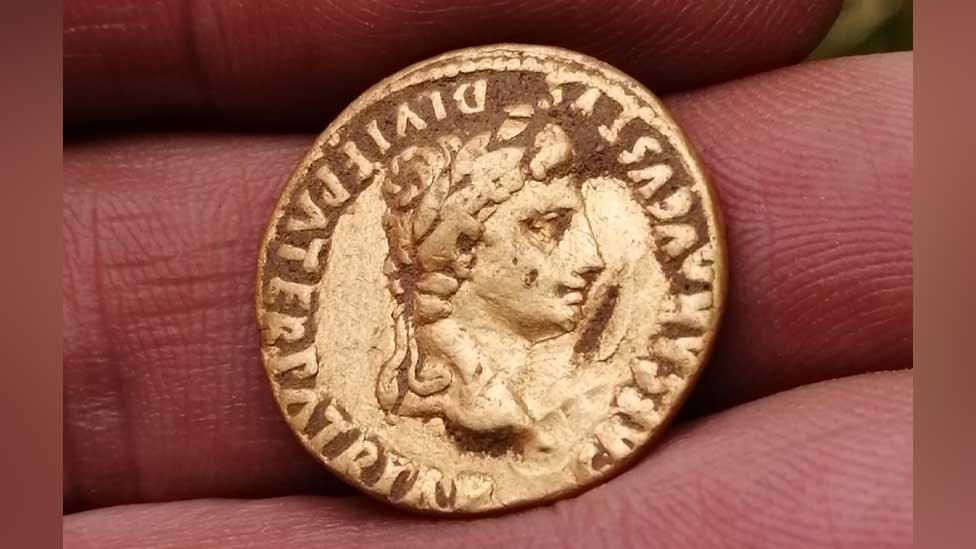
- Published23 July 2021
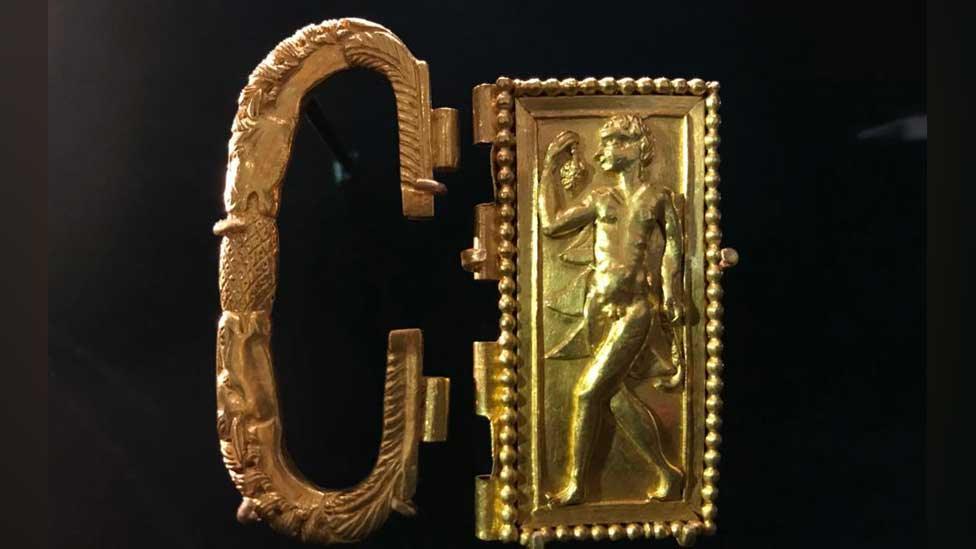
- Published3 July 2021
